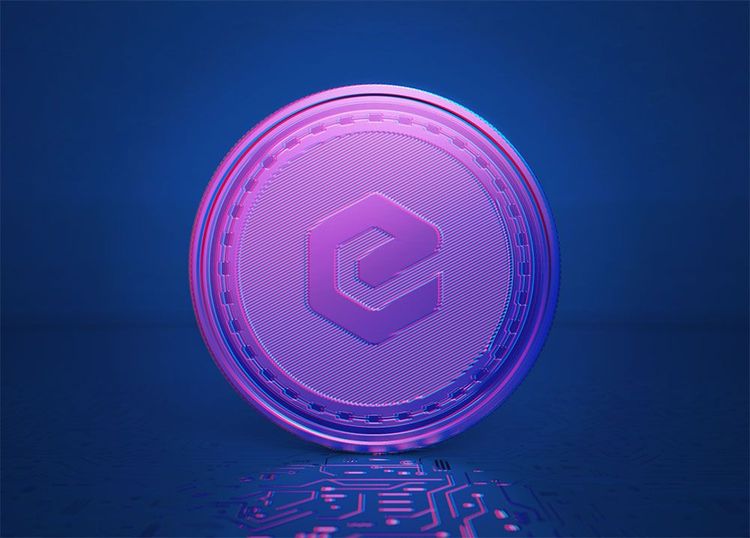Over the past month, the cryptocurrencies of projects undergoing forks have demonstrated considerable growth. Among the reasons for the growing interest among traders towards such assets are the great potential of upgraded blockchains and new characteristics that place forked coins apart from their originals.
These differences include greater scalability, lower network fees and a higher level of security compared to the previous generation of cryptocurrencies. In addition, the holders of such coins can expect a temporary exemption from tax penalties.
eCash
On July 1, Bitcoin Cash ABC (BCHA), which had previously forked from both Bitcoin and Bitcoin Cash (BCH), underwent a significant upgrade. The project was not only rebranded to eCash (XEC), but has also undergone some major improvements to its code aimed at making the cryptocurrency more spendable, scalable and closer to the original Bitcoin philosophy of digital cash.
Amaury Sechet, the founder of eCash and ex-lead developer of Bitcoin Cash, announced that the upgraded blockchain would inherit characteristics never before seen in a Bitcoin project, such as convenient units, staking, fork-free network upgrades, and subchains.
eCash combines Bitcoin’s core features—the same fixed supply, halving schedule, and genesis block—with the latest innovations in Proof of Stake consensus and protocol governance—unprecedented for a Bitcoin network.
Immediately after the announcement of the rebranding, the exchange rate of the BCHA coin increased by 100% from $17 to $34. XEC—the new coin—is currently trading at $0.000024. The rebranding was supported by over 20 exchanges with all BCHA coins on exchange balances converted to a new ticker at a conversion rate of 1 to 1,000,000.
Despite the fact that BCHA holders did not receive any additional coins, the launch aroused great interest from traders, as the updated cryptocurrency will offer staking possibilities and Bitcoin-like functionality for the first time. The developers are also promising a greater degree of privacy and security with instant confirmation of transactions.
Ethereum
Analysts are very bullish ahead of the most anticipated network fork dubbed London—another upgrade to the Ethereum network as part of its transition to Ethereum 2.0. This is a solution that will scale the original blockchain and make it more user-friendly. The main feature of the update is the network’s transition to the Proof-of-Stake (PoS) consensus algorithm, which will replace the Proof-of-Work (PoW) consensus algorithm the blockchain is currently running on.
Despite the fact that the cryptocurrency showed a correction last week against the background of the announcement of the postponement of the fork to Aug. 4, some experts note that Ethereum (ETH) could see prices as high as $2,600 and $3,000, if it successfully tests the current resistance level driven by a medium-term allocation of funds to Ethereum.
In a recent statement, the analysts from Goldman Sachs noted that Ether could overtake Bitcoin due to the real use cases of its network. Bitcoin could be held back by its limited use case and slow transaction speeds.
Despite the bullish sentiments of the analysts, the bears managed to lower the price of Ether by 7.82% last week from the previous week to $2,141. However, if the bulls push the price above the 20-week exponential moving average (EMA) again, it will highlight the fact that traders are accumulating currencies on downturns. A break above $2,410 would clear the path for a possible charge to $2,914.
Ether is currently trading in the $1,800-$1,900 range. A break above would indicate a short-term bullish advantage and clear the way for a possible rise to $3,000.
The London hard fork can be called fundamental to the Ethereum blockchain, as the update is intended to make transaction fees more predictable. At the same time, it is unlikely that EIP-1559 will lead to a decrease in mining fees, since the level of fees will most likely be more evenly distributed over the entire volume of transactions.
A slight decrease in fees may occur as a result of crowding out of unscrupulous miners, which may become an incentive for the growth of Ethereum exchange rates, as users will witness an increase in the efficiency of the ecosystem.
Together with the expectations of further successful updates within the framework of Ethereum 2.0, this launch can have a synergistic affect and contribute to the progressive movement of the altcoin’s price towards the $3,500 mark in the next couple of months.
Another driving factor could be the implementation of the EIP-1559 proposal aimed at burning surplus commissions. This initiative will make it possible to limit the emission of coins in the coming months, and in a particular case, even temporarily turn the inflationary model of Ethereum 1.0 into a deflationary one.
Any restrictions on exchange offerings have a positive effect on the value of tokens. The effect of limiting emissions can manifest itself as early as a month after launch, in early autumn.
Ethereum Classic
All eyes are now on the upcoming hard fork on the Ethereum Classic (ETC) network, which is scheduled for July 21. The exchange rate of ETC on some exchanges reached a price maximum of $61 against the background of the expected event on June 30, having almost doubled from $38 in less than a week.
The update is expected to optimize gas fees coupled with further improvements in the interoperability between the two blockchains. Anticipation of this event is helping the biggest altcoin stay afloat.
Over the past quarter, ETC has already hit price records multiple times. On May 5, the exchange rate of Ethereum Classic on the Binance exchange was the first to rise above $81.6, having risen in price by almost 15 times since the beginning of this year. The market capitalization of the project currently exceeds $9.8 billion and the coin is currently trading at $46.
Most likely, the excitement around the upcoming fork has subsided, but it is possible that ETC will attain records immediately after the update is implemented. The price of Ethereum Classic may also be influenced by the growth of its parent cryptocurrency—Ethereum—as the two have historically developed in parallel.
Tax relief
Traders’ interest in forks may also fuel a possible tax break, as witnessed by the recent Safe Harbor for Taxpayers with Forked Assets bill that was introduced by the congressman of the state of Minnesota in the United States House of Representatives.
In the current iteration of laws on crypto assets, users who receive additional currency inflows as a result of a fork must declare income that is considered taxable during the fiscal year in which the event took place. If the bill passes, it may be offering holders of forked assets a powerful incentive to migrate to the nontaxable haven and turn even more attention to such coins.
The bill is already gaining support and has been backed by the Chamber of Digital Commerce, the Coin Center nonprofit crypto advocacy organization, the Blockchain Association, and some Republicans.
Final thoughts
Hard forks abound on the market and traders have their hands full as their attention is being dissipated by the abundance of potentially profitable offerings. With a new bullish round just around the corner, based on analysis of cyclical chart history, it is logical to expect a deluge of positive news from the major altcoins and market newcomers in the near future.



